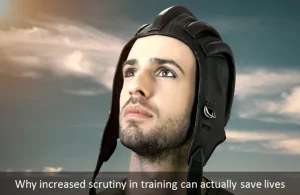Lessons from the Germanwings Investigation

When a Germanwings plane crashed into a remote mountain range in the Alps, speculations focused first on the possibility that the crash was an act of terrorism and second, on mechanical failure. In the days following the crash, however, the investigation revealed that in this case, neither a political motive nor technical error was to blame. Instead, the culprit in the Germanwings case was purely human. While the airline, owned by Lufthansa, was quick to defend its hiring, training and employee monitoring policies and to place the blame on the shortcomings of a single employee, the case raises compelling questions about whether or not the company could have done a better job screening, training and monitoring employees and whether or not a more rigorous process might have saved the 150 lives that were tragically lost in the crash. Or course, Lufthansa is likely not the only airline currently asking these questions.

To become a pilot, one must undergo years of training and pass through a highly rigorous selection process. Indeed, Lufthansa, considered by many to be an industry leader in the selection and training of pilots, reports that less than 7% of applicants make it through their initial screening process. Is it possible, however, that the steps taken to ensure that pilots are “fit to fly”—both in terms of their training and physical and mental health—is not thorough enough?
Recruitment: Unlike many occupational training programs, aspiring pilots usually undergo a rigorous selection progress before they are even admitted to a training program. As a minimum, they must have nearly perfect vision, meet weight and height requirements, and undergo a rigorous physical and mental health exam (indeed, working pilots must undergo similar exams once every six months throughout their careers). Aspiring pilots with poor physical or mental health or questionable records of behavior (e.g., poor driving records) are weeded out long before they are admitted to a pilot training program.
Training: Obtaining a commercial multi-engine pilot license typically takes many years. Training programs, which are often run by airlines and lead to entry-level positions, expect candidates to complete hundreds of hours of coursework, simulated flight training exercises and practice flights under the supervision of experience pilots. Even after graduation, however, pilots continue to work under the supervision of experienced pilots, usually for many years. Most airlines require first officers to have already logged over 2500 hours of multi-engine, multi-crew flight experience. In other words, unlike many professions, pilot training is arguably especially rigorous and continues long after one receives initial licensure.
Hiring: Since many training programs are connected to specific airlines, the training and hiring processes are often but not always intertwined. Candidates who do not enter through a commercial airline training program, however, are subject to the same selection processes as initial candidates and must have a Class 1 Medical Certificate, which ensures they are physically and mentally fit to fly, a pilot’s license and meet the minimum number of flight hours for the position.
In the case of the Germanwings co-pilot, who is said to have deliberately crashed his plane, questions are now being asked about whether or not Lufthansa—the company for whom he worked and who sponsored his training—did enough to ensure that he was fit to fly. For example, we now know that Lufthansa was aware of the co-pilot’s battle with depression—an issue that came up during his training—and yet permitted him to continue his training and ultimately hired him as a co-pilot in their subsidiary, Germanwings. We also now know that in the days prior to the fatal crash, the co-pilot was actively searching for information on topics ranging from depression to suicide to how to permanently lock a cockpit door.
This raises several key questions that have implications not only for airlines and their training programs but also for any high-risk industry where employee actions hold the potential to put other people’s lives at stake. For example, should the airline have terminated the would-be pilot’s training in 2009 upon discovery of his depression? Moreover, should they have subjected to him more regular or invasive monitoring once he was in the cockpit given his known history of depression?
In the coming months, there is no doubt that the recruitment, training and monitoring of pilots will be under increased scrutiny. While some people will continue to point out that deliberate plane crashes of commercial jets are so rare they have not even yet been studied, others will insist that Lufthansa is responsible and failed at the level of recruitment, training and/or employee monitoring. Perhaps all we can learn from this tragedy is that ultimately no training program, however rigorous, is fully resistant to human error, able to control employees’ actions nor ultimately, exempt from scrutiny.